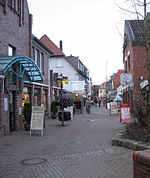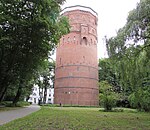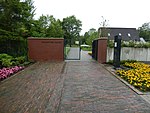SMS Seeadler ("His Majesty's Ship Sea Eagle") was an unprotected cruiser of the Bussard class, the third member of a class of six ships built by the German Kaiserliche Marine (Imperial Navy). Her sister ships included Bussard, the lead ship, along with Falke, Condor, Cormoran, and Geier. Seeadler was built at the Kaiserliche Werft (Imperial Shipyard) in Danzig in late 1890, launched in February 1892, and commissioned in August of that year. Intended for colonial service, Seeadler was armed with a main battery of eight 10.5-centimeter (4.1 in) guns and had a top speed of 15.5 knots (28.7 km/h; 17.8 mph).
Seeadler spent almost her entire career abroad. Following her commissioning, she joined the protected cruiser Kaiserin Augusta in 1893 on a visit to the United States for the 400th anniversary of Christopher Columbus's discovery of the Americas. She thereafter went to German East Africa, where she was stationed until 1898. She returned to Germany briefly for a modernization in 1898–1899, before being assigned to the South Seas Station in German New Guinea. During her tour in the Pacific, she participated in the suppression of the Boxer Uprising in Qing China in 1900. Her assignment in the Pacific was interrupted by the 1905 Maji-Maji Rebellion in German East Africa, which prompted the German Navy to send Seeadler there.
Seeadler remained in East Africa for the next nine years, returning to Germany finally in January 1914. She had spent over thirteen years abroad since her 1899 modernization, the longest period of continuous overseas service of any major German warship. After arriving in Germany, she was decommissioned. She was not mobilized after the outbreak of World War I in August 1914, being too old to be of any fighting value. She was instead used as a mine storage hulk outside Wilhelmshaven. On 19 April 1917, her cargo of mines exploded and destroyed the ship, though there were no casualties. Her wreck was never raised for scrapping.












